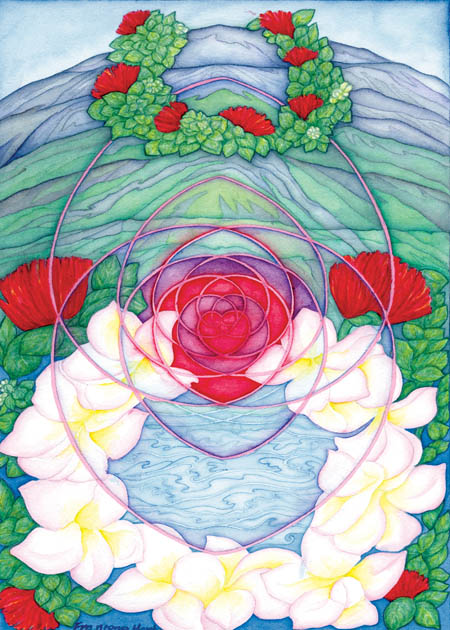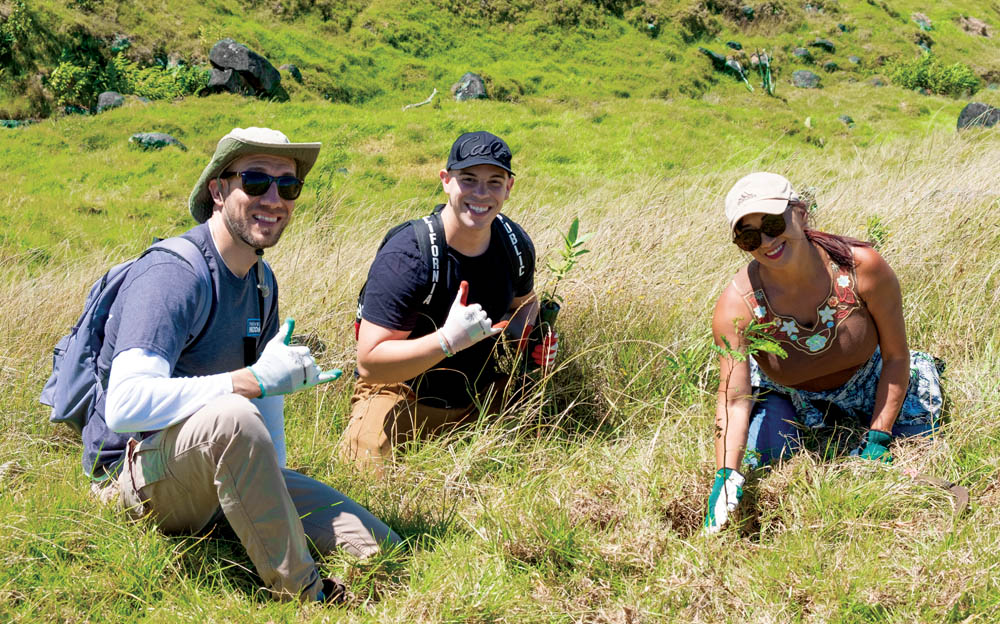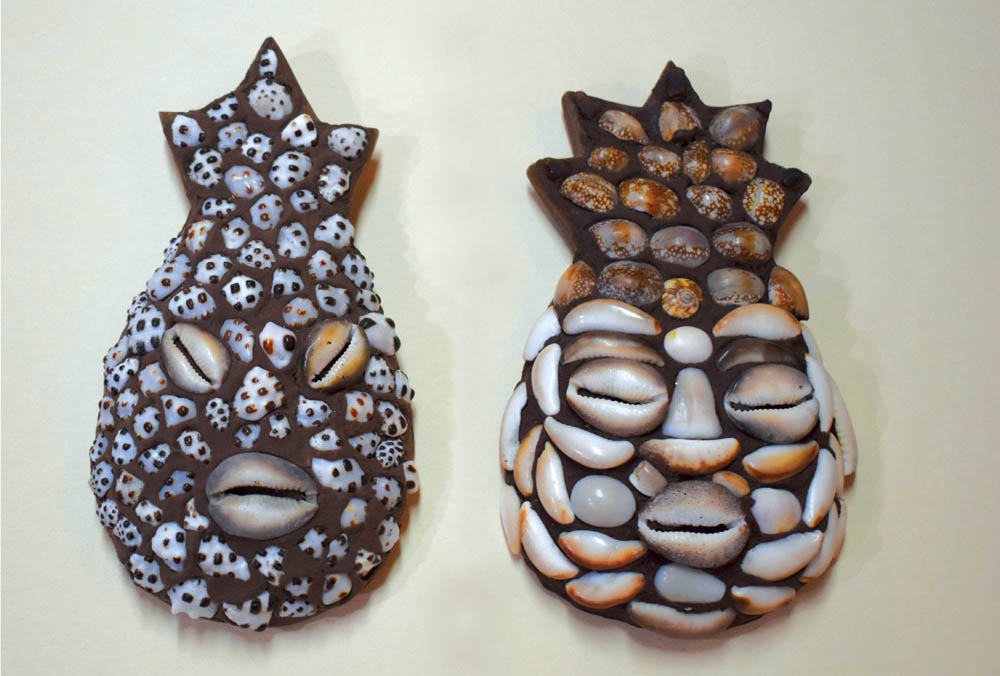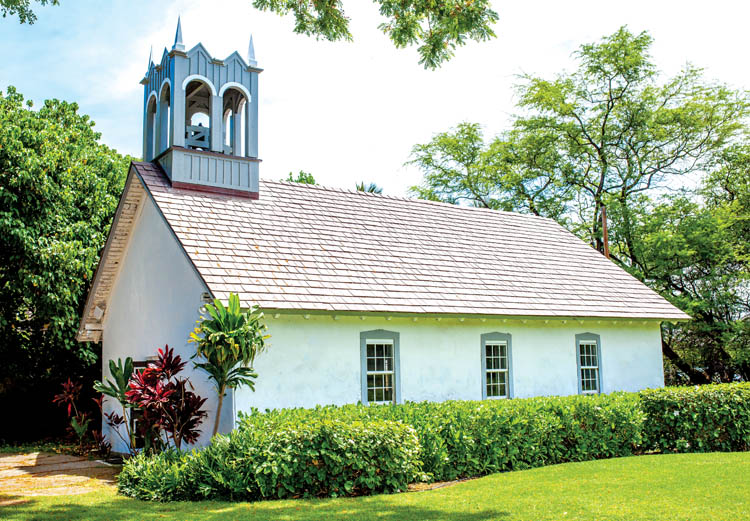
Puakõ’s Historical Hokuloa Church
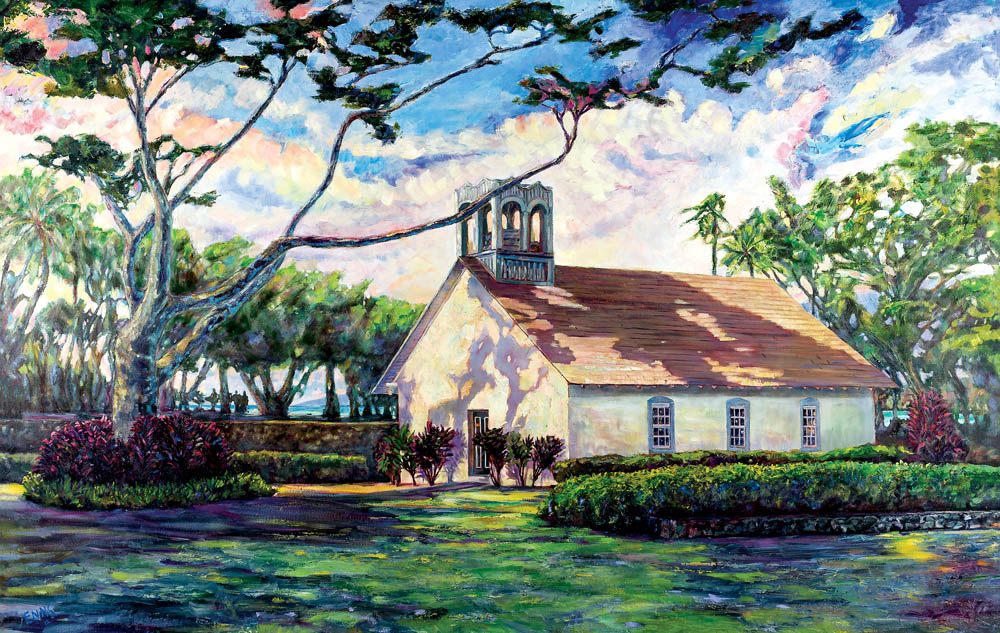
By Ma‘ata Tukuafu
Driving through the tropical coastal community of Puakō, one will notice that huge mansions have replaced many of the humble beach shacks that once populated the little village of 163 homes. There is one building that is a true holdover from bygone days: the small white stucco Hokuloa Church, located on the ocean side once you pass the Puakō boat ramp.
On the list of Hawai‘i’s historic properties published by the Historic Hawai‘i Foundation, the church is described as being the oldest functioning lava rock structure in the district of South Kohala. Using locally-sourced materials, it was the early missionary Lorenzo Lyons who began construction on the building with the volunteer help of the men of his parish.

Lorenzo Lyons and his wife Betsy arrived on Hawai‘i Island from Boston in 1832 and were stationed in Waimea. Within a month of his arrival, the 24-year-old Lyons would preach his first sermon entirely in Hawaiian. His was one of the largest parishes within the islands and Lyons was overwhelmed with the size (and distances) of his congregation. He would spread his gospel and establish schools and churches here until his death in 1886. The terrain was rocky and harsh as he would travel on foot, by horseback from Waimea to Honoka‘a and Waipi‘o Valley, and down to the coastal areas of Kawaihae and Puakō, sometimes by canoe. At the time, Hokuloa Church had a sizable and active membership, as well as a school which was also part of his ministry.
Jack Olson, president of the Hokuloa congregation, says much of the pre-2000 history of Hokuloa Church is found in the book Puako–An Affectionate History, compiled and written in 2000 by the Puako Historical Society.
In 1835, Lyons wrote about walking from Waimea to Puakō, “Puakō is a village on the shore, very like Kawaihae, but larger. It has a small harbor in which native vessels anchor. Coconut groves give it a verdant aspect. No food grows in the place. The people make salt and catch fish. These they exchange for vegetables grown elsewhere.” Though much of Lyons’ time was spent in Waimea, Kohala, and Hāmākua, the reports he sent to the American Board of Ecumenical Missions are how some of the details of 1850s life was gleaned.
It was King Kamehameha III who offered some of his own Puakō land to Lyons for the use of his ministry. In 1858 work commenced on the church and a 21’ x 36’ foundation was laid out. Divers went out to the Puakō reef to cut and bring up coral blocks which were then fired in pits. The blocks were ground and mixed with both sand and water to make mortar that bound the lava rock walls. The original floor was built with hand-cut and hewed planks of koa wood.
In 1859, Lyons’ church report summarized the progress of Hokuloa’s construction:

“I reported this [church] last year as on the way – the stone walls up – laid in mortar – & windows procured. This is the poorest parish in my field, rendered still poorer of late by the frequent rains that have prevented the people from making salt – one of their chief dependencies – the wind – rough weather, & the heat of the volcanic stream that entered the sea near this place [from the enormous 1859 eruption of Mauna Loa, from which lava flowed over 25 miles to this coast] have killed or frightened away all their fish the 2nd source of wealth. There remain the fruit of a few cocoa nut [sic] trees, & the lauhala from the leaf of which the women busy themselves in making mats. The men can sometimes find a job of work that will bring them in something, i.e. if they can manage to obtain food, all of which comes from a distance. One such job they have found. They have built a stone schoolhouse plastered inside and out & surrounded it with a stone wall & turned all the avails 120$ [sic] into their [church]. [This school building stood on the shoreline immediately north of the church.] The avails of the women’s mats are disposed of in the same way. With the funds obtained & any others I may be so fortunate as to secure by begging or otherwise, I am authorized by the trustees to purchase materials for the roof – floor &c. We have resolved to have the roof & belfrey & the floor laid by the next communion season – which is the last week in Aug.”
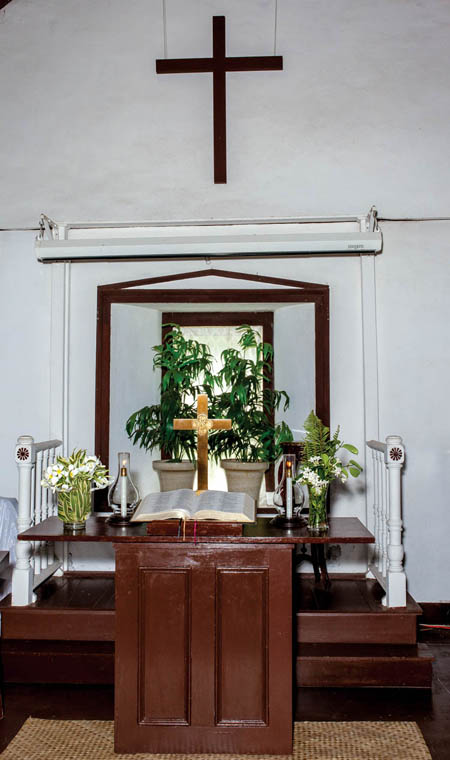
Diseases such as measles and smallpox devastated local populations; however, residents of Puakō were largely spared mainly because they sealed themselves off from the rest of the world. Until the epidemic subsided, no one was allowed access by trail, and no canoes were able to land. The elders of Puakō instituted a lengthy quarantine and Puakō was spared the worst of the pestilence. For example, in 1820, there was an estimated 10,000 people in South Kohala to Hāmākua, but by 1863 it had dropped to 3,000. To compound matters, a huge lava flow from Mauna Loa reached the ocean south of Puakō in 1859. It flowed between today’s Mauna Lani and Waikoloa resorts. The smoke from the flow was visible from Puakō and the lava killed much of the marine life on nearby reefs. Puakō residents had to be extremely resilient, creating ways to trade for food and provisions for their survival.
Construction of the church was finally completed in 1860 and Lyons dedicated Hokuloa Church on March 21, 1860. According to Puako–An Affectionate History, a new bell was installed into the little steeple, which “replaced the conch shell horn that had formerly called the faithful to worship. Lyons describes the scene with satisfaction. ‘The stone chh [sic], with its whitened walls, & reddened roof & humble spire give the place an air of civilization & religiousness, & the school house in close proximity with its similar walls tho’ thatched roof, makes something of a show.’ The seventy-member parish held a festival to help pay off the remaining $1,200 debt.”
According to the history Olson provided, regular worship services were held until the collapse of the sugar industry and plantation closure of 1914. By then, only seven families remained in Puakō. In the 1920s, the school burned and was not rebuilt. Between 1914 and 1965, the church saw only intermittent use and soon deteriorated. In 1950, a territorial survey established the path of Puakō Beach Drive and divided the area into 163 lots to be developed into homes. From some historical records, in the 1950s–60s it took two hours for Puakō residents to reach Kawaihae. It wasn’t until 1964 that the road to Kawaihae was paved, and in 1975, the Queen Ka‘ahumanu Highway linking Kailua-Kona to Puakō and Kawaihae was constructed. In the 1960s, efforts by the Hokuloa Historical Society to repair the church were begun; the original wood floor was replaced by concrete, and a small restroom and storage building was constructed near the church. However, restoration efforts came to a halt in 1967 when funds were depleted and interest waned.
In 1989, Rev. John Hoover was installed to lead worship and the next renovation took place: the roof was replaced and electricity was added. Rededicated on April 8, 1990, septic and irrigation systems were installed and the bell tower was restored in 2014.
From 1860 to the present day, the church has been a mainstay and an anchor for an ever-changing village. The little white church looks basically the same as it did when it was first dedicated, although now it is flanked by million-dollar homes. Lil Yanez, a member of the congregation, says they are cleaning out the bay near the church, keeping the native plants and opening the view to the water. The church is idyllic for wedding ceremonies.
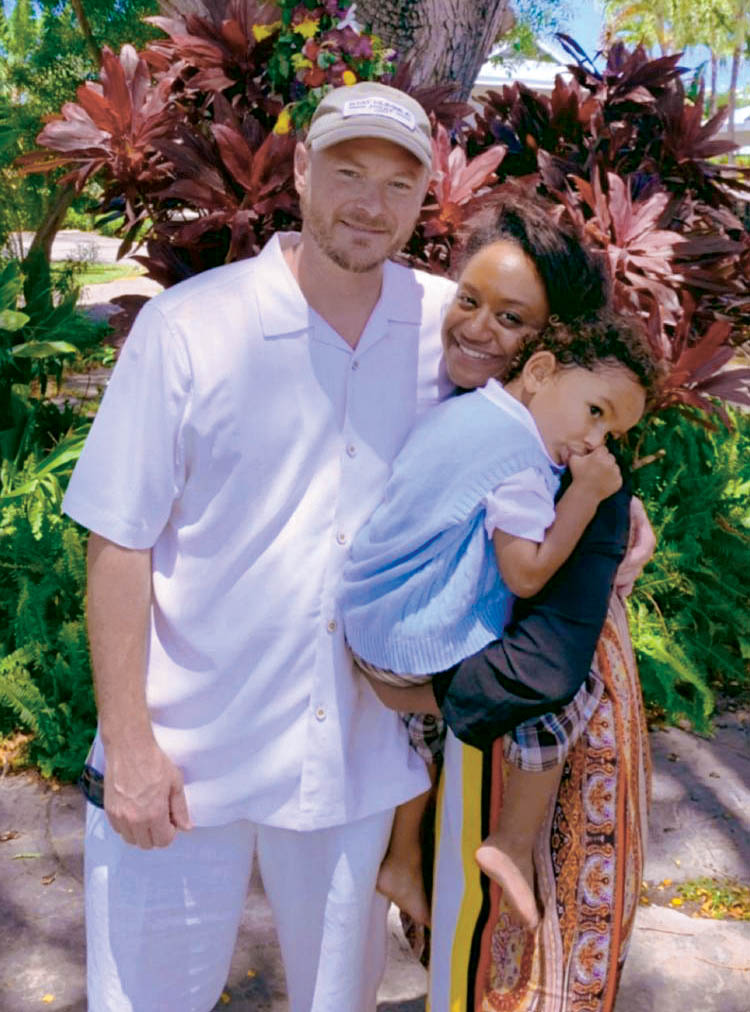
Today the pastor of Hokuloa United Church of Christ (UCC) is Reverend Joe Medlin. Hailing from New York City, Rev. Joe moved here with his wife and child three years ago to serve the people of Hawai‘i. They were looking for a church with like-minded people and found it with the congregation of Hokuloa Church.
“My wife and I are passionate about social justice and embrace diversity in all its forms,” says Rev. Joe. “We have a sensitivity with those who are disenfranchised, oppressed, or poor. Our former pastor, Rev. Hoover, began the legacy of collecting food for the poor, and we are blessed to continue to reach out to families who don’t have homes.”
Rev. Joe says they believe in the beatitudes and the sermon on the mount, as well as Jesus’ love and compassion, and how Jesus reached out to people who were ostracized. Following two years of prayer, education, discussion, and listening, Hokuloa voted to become an Open and Affirming Congregation (ONA). This is a movement of more than 1,500 churches and ministries in the UCC that welcomes LGBTQ members. Hokuloa is the sixth UCC congregation in the state and the first on Hawai‘i Island to become an Open and Affirming Congregation.
“One of the joys of ministry,” says Rev. Joe, “is seeing people find a spiritual home here.”
Services at Hokuloa Church are held on Sundays at 9am and everyone is welcome to attend. ❖
For more information:
hokuloaucc.com, historichawaii.org
Mahalo Clark Realty – Home/Building Story Sponsor
